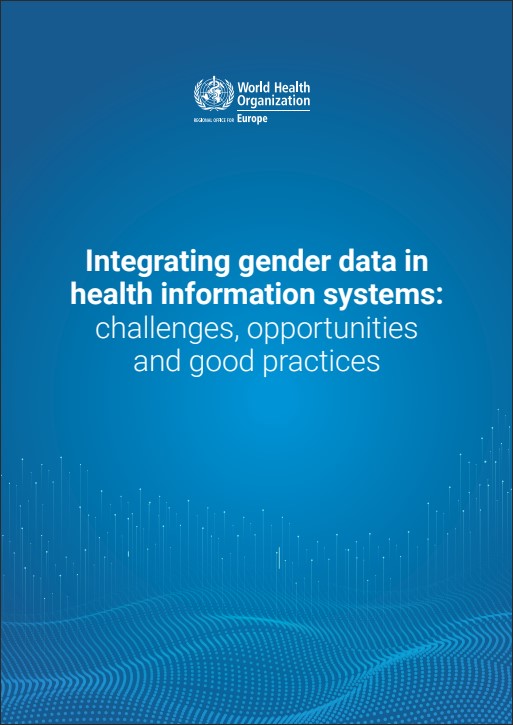Integrating gender data in health information systems: challenges, opportunities and good practices

Citation: Integrating gender data in health information systems: challenges, opportunities and good practices. Copenhagen: WHO Regional Office for Europe; 2021. Licence: CC BY-NC-SA 3.0 IGO.
Abstract: Health information systems are constantly generating data. Data on everyone who interacts with the health system, their health status, diagnoses, treatment, and outcomes, is kept on private record. While details remain confidential, data are aggregated to provide health statistics that guide decision making.
Health statistics are crucial for public health policy, but not only that. These data are used for monitoring inequalities and tracking progress towards achieving goals like gender equality and sustainable development. This depends on quality data being collected, analysed, and produced so that it is sex-disaggregated wherever possible and brings to light how gender norms are shaping people’s experiences and outcomes.
This paper explains the importance of gender data and statistics and how health information systems contribute. It explores the common challenges in producing and using gender and health data and suggests opportunities and examples of good practices. Recommendations to support national health systems improve data quality are provided.
This guidance document is part of the WHO Regional Office for Europe’s work on supporting Member States in strengthening their health information systems. Helping countries to produce solid health intelligence and institutionalized mechanisms for evidence-informed policy-making has traditionally been an important focus of WHO’s work and continues to be so under the European Programme of Work 2020–2025.
Health statistics are crucial for public health policy, but not only that. These data are used for monitoring inequalities and tracking progress towards achieving goals like gender equality and sustainable development. This depends on quality data being collected, analysed, and produced so that it is sex-disaggregated wherever possible and brings to light how gender norms are shaping people’s experiences and outcomes.
This paper explains the importance of gender data and statistics and how health information systems contribute. It explores the common challenges in producing and using gender and health data and suggests opportunities and examples of good practices. Recommendations to support national health systems improve data quality are provided.
This guidance document is part of the WHO Regional Office for Europe’s work on supporting Member States in strengthening their health information systems. Helping countries to produce solid health intelligence and institutionalized mechanisms for evidence-informed policy-making has traditionally been an important focus of WHO’s work and continues to be so under the European Programme of Work 2020–2025.
Author(s): World Health Organization
Year: 2021
Language: English
Resource Type: Guidance and Tools
Source: World Health Organization
